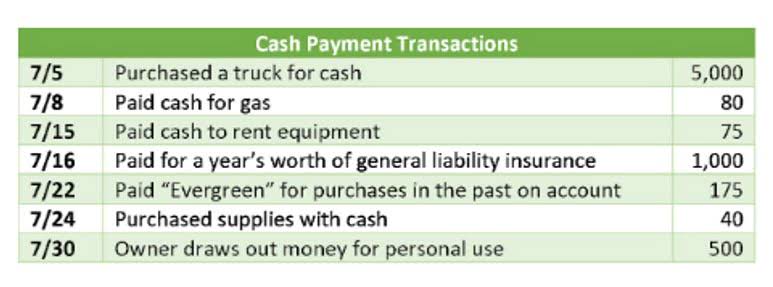
As shown in the screenshot below, the annuity type does make the difference. With the same term, interest rate and payment amount, the present value for annuity due is higher. It lets you clearly understand how much money you need to invest today to reach the target amount in the future. Also, it can help you make an informed decision on whether to accept a specific cash rebate, evaluate projects in the capital budgeting, and more. Starting off, the cash flow in Year 1 is $1,000, and the growth rate assumptions are shown below, along with the forecasted amounts. Moreover, the size of the discount applied is contingent on the opportunity cost of capital (i.e. comparison to other investments with similar risk/return profiles).
Formula for Present Value (PV) in Excel
This lottery payout calculator shows how time value of money may affect your take-home winnings. Another problem with using the net present value method is that it does not fully account for opportunity cost. However, you can adjust the discount rate used in the calculator to compensate for any missed opportunity cost or other perceived risks. This Present Value Calculator makes the math easy by converting any future lump sum into today’s dollars so that you have a realistic idea of the value received. Please pay attention that the 3rd argument intended for a periodic payment (pmt) is omitted because our PV calculation only includes the future value (fv), which is the 4th argument.
More Time Value of Money Calculators
PV is the figure you calculate when you want to compute, for example, the initial amount of investment to be made to achieve a certain target in a given number of years. Imagine someone owes you $10,000 and that person promises to pay you back after five years. If we calculate the present value of that future $10,000 with an inflation rate of 7% using the net present value calculator above, the result will be $7,129.86. In addition, there is an implied interest value to the money over time that increases its value in the future and decreases (discounts) its value today relative to any future payment.
Annuity Table
- It shows that $4,329.48, invested at 5% interest, would be sufficient to produce those five $1,000 payments.
- If you received $100 today and deposited it into a savings account, it would grow over time to be worth more than $100.
- To get your answer, you need to calculate the present value of the amount you will receive in the future ($11,000).
- An annuity due, by contrast, is a series of recurring payments that are made at the beginning of a period.
- Assume for simplicity’s sake that the account pays 6% at the end of each year, and it also compounds interest on the interest earned in any earlier years.
- If you don’t have access to an electronic financial calculator or software, an easy way to calculate present value amounts is to use present value tables (PV tables).
The present value is the amount you would need to invest now, at a known interest and compounding rate, so that you have a specific amount of money at a specific point in the future. The present value of an amount of money is worth more in the future when it is invested and earns interest. You can think of present value as the amount you need to save now to have a certain amount of money in the future. The present value formula applies a discount to your future value amount, deducting interest earned to find the present value in today’s money. Of course, both calculations also hinge on whether the rate of return you chose is accurate. As can be seen in the formula, solving for PV of single sum is same as solving for principal in compound interest calculation.
How to know if a present value of an investment is good or bad?
The core premise of the present value theory is based on the time value of money (TVM), which states that a dollar today is worth more than a dollar received in the future. The time value of money (TVM) principle, which states that a dollar received today is worth more than a dollar received on a future date. For example, suppose you want to know what interest rate (compounded semi-annually) you need to earn in order https://www.bookstime.com/ to accumulate $10,000 at the end of 3 years, with an investment of $7,049.60 today. Based on this result, if someone offered you an investment at a cost of $8,000 that would return $15,000 at the end of 5 years, you would do well to take it if the minimum rate of return was 12%. This example shows that if the $4,540 is invested today at 12% interest per year, compounded annually, it will grow to $8,000 after 5 years.

Now that you are familiar with annuities, we can transition into the how and what of perpetuities. In essence, the present value of a perpetuity is the present value of the future cash flows (no present value of single sum principal involved). If you don’t have access to an electronic financial calculator or software, an easy way to calculate present value amounts is to use present value tables (PV tables).

More Financial Calculators
Table of Contents

